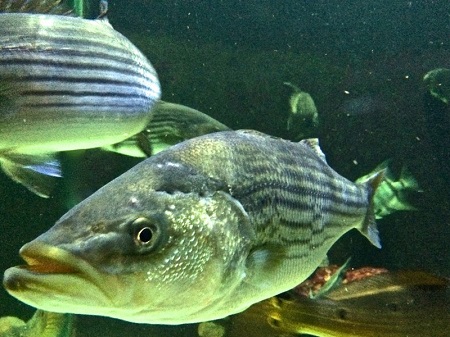 Striped bass reproduction in the Chesapeake Bay slightly exceeded the long-term average this year, annual surveys show, offering hope that the population is rebounding from low levels that led to coastwide fishing restrictions three years ago.
Striped bass reproduction in the Chesapeake Bay slightly exceeded the long-term average this year, annual surveys show, offering hope that the population is rebounding from low levels that led to coastwide fishing restrictions three years ago.
In Maryland — where reproduction has historically been an accurate predictor of future coastwide populations — the annual juvenile index has been above average for two of the past three years.
That’s an improvement from the previous seven-year span when the index had been below average in all but one year. That reproductive drought spurred the Atlantic States Marine Fisheries Commission, which regulates the harvest of migratory fish, to impose a coastwide catch reduction in 2014, including a 20 percent cut in the Chesapeake.
Striped bass start reaching legally fishable sizes after three to four years, so the recent improvements in reproduction seen by surveys in Maryland and Virginia should be reflected in the numbers of catchable-size fish in the next few years.
Dave Blazer, director of fishing and boating services with the Maryland Department of Natural Resources, called the recent uptick “an encouraging sign for the coastal population and future fishing opportunities.”
In Maryland, this year’s young-of-year index was 13.2, which was above the 64-year average of 11.7. It follows an index of 24.2 in 2015, which was more than twice the long-term average.
The index represents the average number of fish less than 1 year old captured in 132 samples collected during the summer at 22 survey sites in four major spawning areas — the Choptank, Potomac and Nanticoke rivers, and the Upper Bay.

DNR biologists have been conducting the survey since 1954.
Meanwhile, the Virginia Institute of Marine Science also reported that its annual juvenile striped bass index was 8.98, which was slightly above the survey’s long-term average of 7.77 per seine net haul. That was also similar to indices VIMS scientists had reported the previous four years.
The Virginia survey samples 18 sites in the Rappahannock, York and James river watersheds and has been conducted since 1967.
